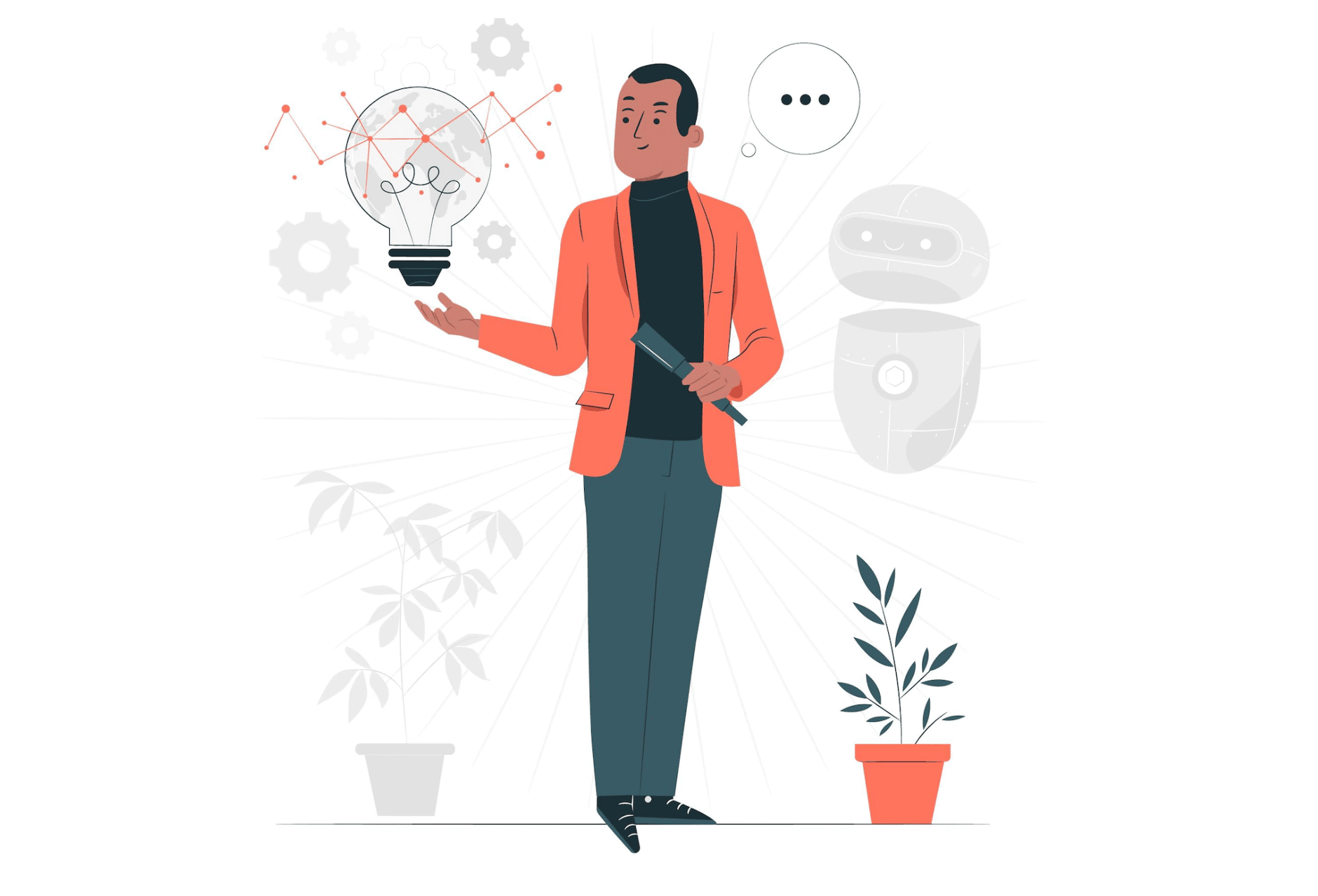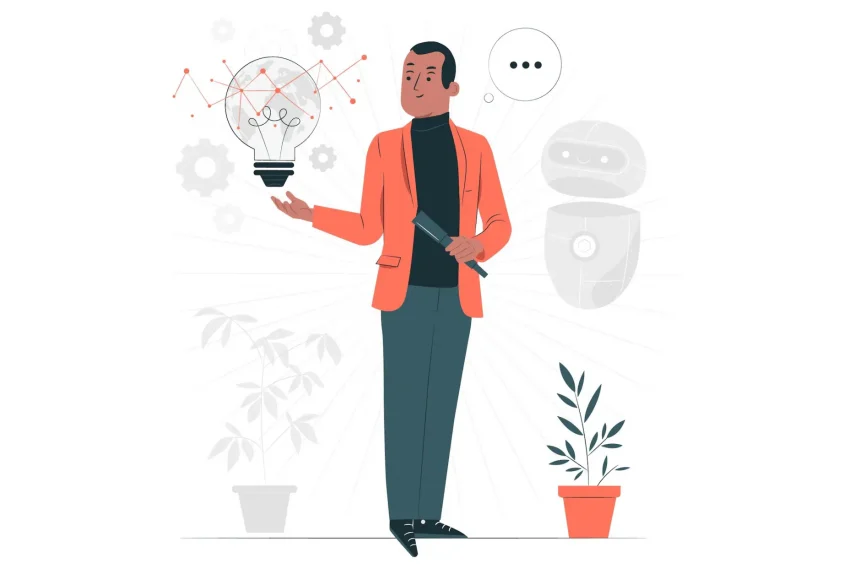
Introduction
The manufacturing, transport, healthcare, and even artistic industries are all being transformed by advancements in artificial intelligence (AI). Many experts and laypeople alike believe that AI is on track to eventually replace many jobs and professions. But one field that has remained relatively untouched by the rise of AI is the education sector. Until now.
Access to quality education is still limited to those who can afford it. Thankfully, many argue that AI could solve the impending teaching crisis. Others claim that not even intelligent robots will be truly capable of replacing human teachers.
This blog post will examine both sides of the argument and explore how AI could potentially replace teachers in our classrooms.
Technology Shaping The Modern Classroom
Before we get to AI-powered robots, several tech advancements are already shaping the modern classroom. Innovations such as online learning platforms allow students to learn from anywhere, no matter how busy their schedules may be.
Khan Academy is a popular example that uses AI to provide tailored study plans, practice problems, and feedback. Additionally, adaptive learning platforms use complex algorithms to analyze students’ performance and adjust the coursework accordingly. This ensures that all students get the help they need at the right pace.
In addition to online resources, schools are implementing technology to improve the learning experience and reduce teacher turnover. Even teaching methods are slowly being transformed by technology. In a world where Google search is the go-to tool for finding information, teachers may prioritize developing critical thinking over memorizing facts.
This is in sharp contrast to teaching 20 years ago when libraries were the primary resource for information and students were expected to memorize everything. Student interaction is also changing. At the collegiate level, most schools have some form of an online platform where students can discuss study materials and share ideas. While this is an excellent way for students to learn from each other, it also takes time away from teachers.
Clearly, technology has already had a major impact on the classroom, and AI is poised to take things even further.
Also Read: How Technology Has Changed Teaching and Learning
AI and Augmented Reality Based Teaching
When most people think of AI, the first thing that comes to mind is a humanoid robot and lifelike features. These intelligent robots would be a godsend in the current teacher shortages affecting many parts of the globe. They would also help with other teaching methods, such as one-on-one tutoring, by offering a more personal experience.
Offering tutoring at scale is nearly impossible for humans, so AI is a clear choice. However, there are already AI-powered tutoring apps that use a combination of voice recognition and natural language processing to track learning progress and provide personalized feedback. According to Education World, we are more likely to see robot teaching assistants (TA) than full-fledged robots in the classroom.
However, there’s no telling what the future may hold. AI is advancing at a frightening pace, and we will ultimately achieve “General AI” in the next few decades. General AI, as opposed to narrow AI, is capable of learning and reasoning like human workers. In other words, it would have the human touch and social skills necessary to recreate current teaching methods effectively.
As mentioned in the Education World article, mirror neurons are one of the main reasons we can’t replace teachers with robots. These neurons are responsible for understanding and empathizing with others. In other words, humans learn best from other humans. As such, AI robots would need to be indistinguishable from humans for us to reap the benefits of robotized teaching.
AR & VR Teaching
That being said, there is still a lot of potential for AI and augmented reality (AR) in the classroom. AR allows students to interact with digital objects by overlaying them on physical ones. They can use a school-issued tablet to interact with 3D representations of topics like planets, cells, and fractions. These visual aids help students better understand abstract concepts and speed up learning processes. It gives them an additional outlet for critical thinking and problem-solving skills.
Many people are visual learners, and reading from a textbook can make concepts feel more abstract than they really are. However, AR tablets allow students to visualize complex topics using real-world examples. This can be especially helpful for students who have trouble understanding mathematical and scientific concepts, as these areas of study require visual creativity and reasoning skills.
In addition to AR tablets, schools may also consider other forms of AR technology, such as augmented reality headsets. These headsets can overlay 3D virtual objects onto a real-world classroom setting. For example, a chemistry class may use digital goggles that show atoms and molecules being split or rearranged in real-time.
Finally, remote learning may take on a whole new meaning with VR. Imagine a student being able to attend online courses from the comfort of their own home. They would be able to interact with digital teachers and ask questions in real-time, just like they would in an actual classroom setting. Digital teachers could also use VR headsets while teaching remotely or at home. It would allow them to engage with students more personally instead of just relying on a digital textbook or lecture.
Engagement Monitoring
All qualified teachers understand the importance of student engagement in the classroom. However, it is often difficult to monitor and track this important metric. Individual students have different learning styles and may check out of a class for a variety of reasons. Some students may be frustrated by the difficulty of the material, while others may simply be bored.
That’s where Chinese bands that monitor student engagement come in. These wearable devices track brain waves to gauge students’ listening skills during class. They can be used to pinpoint struggling students who need extra guidance or even just to confirm that a lecture or lesson plan is effective.
AI can take things one step further by analyzing facial expressions and other nonverbal cues. For example, a teacher could have cameras in the classroom that track students’ reactions to certain materials. How often do they yawn or check their phones? This data could then be fed through an AI algorithm to generate real-time engagement reports for teachers. They can pass on this feedback to students and adapt their lessons accordingly.
Social interaction is also an important part of learning. Engagement monitoring might also look at social cues such as eye contact, verbal interactions, and classroom participation. For example, we could use AI-powered engagement monitoring tools to identify students who fear speaking in class or are socially awkward. Teachers could then prioritize these students in their lesson plans. They can provide extra support to help them engage more with their classmates and teachers.
Also Read: How Can AI Improve Cognitive Engagement
Data-Driven Lesson Plans
Next, AI can improve the quality of education and student outcomes by creating data-driven lesson plans. It’s no secret that different learning styles and literacy skills can vary greatly from student to student. The ability to understand and apply complex concepts also varies widely between students. That’s why it can be challenging for teachers to create effective lesson plans that accommodate everybody.
In order to implement personalized learning, qualified teachers must create student profiles based on the analysis of student performance. These profiles must include data on each student’s learning style and difficulty level. AI can help automate this task by analyzing students’ performance in real-time. It helps gauge their comprehension of new concepts. This data can then be used to create a personalized education plan that reflects the needs of individual students.
There are also time-understanding issues to consider. In most classrooms, there simply aren’t enough hours for a teacher to spend one-on-one time with each student. Some students may go home each night without understanding the concepts taught in class.
AI can help address this problem by analyzing student performance data and creating a more efficient lesson plan. It could also include making suggestions on improving students’ study habits. Or recommending resources they can use to do their own research outside of the classroom. Inside the classroom, it means effectively dividing the lesson plan by spending the optimal amount of time on each topic and activity.
Adaptive Learning
Student outcomes are also significantly impacted by the way that lessons are delivered. Teaching is often heavily lecture-based. For instance, secondary school teachers use a “sage on the stage” approach. Students simply have to listen, take notes, and memorize tests on a daily basis. Many don’t respond well to this student experience.
Instead, experts believe teachers should try “coaching students.” Using motivational tactics, we can help them establish good study habits. A personalized learning experience might include changing topics mid-lesson if a student struggles with a specific concept.
But for the personalized education plan to be successful adaptive learning programs and adaptive assessment programs need to be implemented. Once again, AI can help here. By using machine learning algorithms, teachers can create ever-changing lesson plans that adapt to student needs. Students can also benefit from an adaptive assessment program. These provide real-time feedback on their performance and use this information to improve their test scores.




